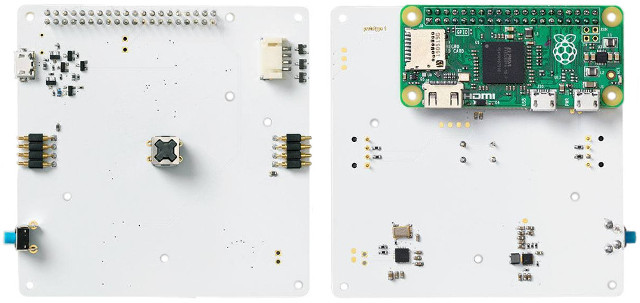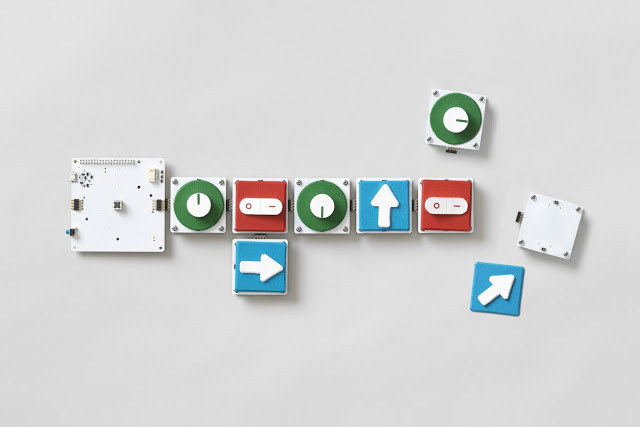Visual programming development tools such as Scratch or Blockly are now becoming more popular to introduce school children to programming, and Google Research is now working on bringing the software visual programming concept to physical blocks “programming” though Project Bloks targeting younger children who may not be able to write or read yet. It might also help older children grasping programming concepts faster than when programming by typing on a keyboard.
Project Bloks is comprised of three main hardware components connected together:
- Pucks – Those are the buttons, dials, switches, and other inputs from the project. Pucks have no active electronics, and even a piece of paper with some conductive ink could be a Puck.
- Base Boards – They read a Puck’s instruction through a capacitive sensor, and forward a Puck’s command to the Brain Board. Each Base Board is also fitted with a haptic motor & LEDs, and can trigger audio feedback from the Brain Board’s built-in speaker.
- Brain Board – Built around the Raspberry Pi Zero, and adding WiFi, Bluetooth, and a built-in speaker, the Brain Board take care of all the processing, provides the other boards with power, and sends the Base Board(s) instructions to any device with WiFi or Bluetooth connectivity

Children can then assemble Pucks, a Base Board, and the Brain Board together in various forms and shapes to create projects. Google partnered with IDEO to create Coding Kit reference device to show researchers, teachers, and developers how kids could learn basic concepts of programming.
More information can be found on Project Bloks website.
Via HackerBoards

Jean-Luc started CNX Software in 2010 as a part-time endeavor, before quitting his job as a software engineering manager, and starting to write daily news, and reviews full time later in 2011.
Support CNX Software! Donate via cryptocurrencies, become a Patron on Patreon, or purchase goods on Amazon or Aliexpress





